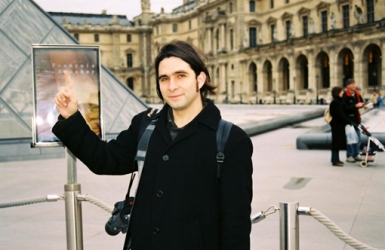We live in a world full of mediations, and we often get to know the Other and different cultures of the world through these mediations. In the process, though, power and domination relationships superimpose themselves to the merely informative aspect. Hence, mediations set up powerful domination circles that sometimes lead us to develop distorted visions of reality. Perception of reality then becomes a construction mediated by various communication, domination, information and entertainment instruments, techniques and, practices.
The work of Colombian artist François Bucher, which we bring to you in this tenth edition of FF>> Dossier, belongs precisely in this complex web of communication circuits that we experience in our times. Based on images that he himself records, as well as television, cinema, and Internet images, plus audio from radio stations or from the streets, Bucher’s work is reflexive, like a “video-essay”, a means of operating with image and sound to express different points of view.
These issues are quite clear in instigating projects as Television (an address) (2003-2004), developed in partnership with artist Drazer Pantic. In this project, artists turn TV broadcasts into completely different broadcasts – the project is a subversive appropriation of the TV image flow. Artists and scholars are invited to watch TV with a microphone in one hand and a remote control in the other. The TV image is captured by a camera and broadcast to public spaces, along with the participant’s comments. The seeming simplicity of the device developed by Bucher and Pantic does not hide the subversive power of the appropriation of TV flow, which then becomes a sort of live commentary. Among the participants, Martha Rosler, Keith Saborn, and Thomas Keenan have been in front of the TV with their extremely harsh criticism regarding the frantic pace of television.
This political and critic vein, especially regarding means of communication, is present in almost all of Bucher’s artistic output. One such example is the award-winning White balance video (2002). Named after the process used by video producers in order to balance the colors at the beginning of recording sessions, the video is structured as an essay on the repercussion of the terrorist attacks in New York on September 11. Images of city streets, of street vendors selling pictures and T-shirts of the tragedy, as well as TV and Internet images, political speeches, and audio of all kinds comprise the “video-essay”, enabling the viewer to check out many different interpretations of real facts. The video intermingled with electronic image noise, sort of like static, which serves as punctuation and opens up undefined areas, “breathers” between one image and another, spaces we must fill up with our own interpretation of the facts and of the video itself.
These static noises are also present in the Attaining the body video (2003). Once again, the starting point is television broadcasts, but now within the complex context of the Iraq war. Burcher’s video uses formal resources of video art to depict a fairly strange fact, the invasion of three stations (Al-watan, Ammway, and Al-Sharang) during the Israeli occupation in Ramallah – the soldiers took over the stations and broadcast porn videos. By mixing up red screens, nearly telegraphic texts, and soft classical background music, plus the typical static of a salient TV set, Bucher makes it clear that the domination of the symbolic space is also present in the complex strategies of Israeli occupation. This video by Bucher combines video art and documentary film, once again inviting us to reflect.
We have come across François Bucher by indication of Marta Lúcia Velez, prominent electronic art producer in Colombia, and the essay has been written by Ana Maria Lozano a Colombian artist and scholar who has sent us a brilliant text on Bucher’s artwork.
It is with great pleasure that we bring, in this edition, the instigating and provocative work of François Bucher, whose visual essays convey the power of electronic image and art as points of reflexion and resistance in time of domination and globalization.
